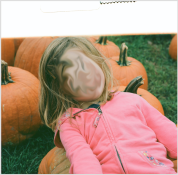I have seen labs ruin a lot of rolls of 120 this way and, when I worked in a lab, I saw coworkers do it a number of times. When you load film into a minilab roll processing machine, you typically tape it to some sort of a leader card to pull it through the machine (or at least pull it into the machine). With 35mm, you just tape the film leader directly to the leader card and everything is fine because the user exposed more leader by loading the camera than you will when you tape it to the leader card and send it into the machine. However, with 120, you typically take it into the darkroom, unroll the 120, roll up just the film, place that into a small light-tight (at least if it's been taken care of!) transfer case, and pull out a *tiny* bit of the end of the film to tape to the leader card so you can send it into the machine. If you use scissors to remove the film from the backing paper you shorten the film a bit and have problems. If you accidentally bump the film transfer case away from the leader card while you're trying to get it into the machine you have problems. If your camera spaces the last frame quite close to the end of the roll, you have problems. If, at any stage, the technician doesn't take enough care, you have problems. It's not really an optimal problem.
Get your film back. Measure the length of the film. If it's less than 72cm long, they cut some of the film off and this is likely the lab's fault. If the film is full length but more than ~1.5" of film is fogged, it's the lab's fault. If the film is full length and less than 1.5" of film at the end is fogged, your camera probably pushed the last frame too far towards the end of the roll. If it's the camera's fault, you should probably run a roll through the camera, removing the film back at each frame and tracing the film gate opening onto the film with a marker before replacing the back and advancing to the next frame. When you get to the end of the roll, remove the film and unroll it, looking at how all your marker-drawn boxes line up on the film. They should be regularly spaced and biased towards the leading end of the film.



 When this happens to me, there is usually a headless body in the picture.
When this happens to me, there is usually a headless body in the picture.
